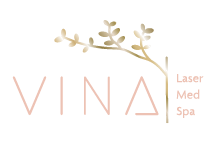Beauty 101: Spider Veins
The medical name for spider veins is telangiectasias and is also referred to as thread veins. Spider veins are pretty common, with them being more common in women than men. Spider veins can appear on people of any age, though the frequency of it increases with age.
What Are Spider Veins?
Spider veins gets its name from its appearance of small lines arranged in a pattern like a spider’s web. You usually see those lines as a red, purple, or blue color.
Unlike varicose veins, spider veins don’t usually give you raised lumps under the skin. They also don’t cause pain even though they may be a bit tender or cause discomfort in that affected area.
Spider Veins on Legs
Spider veins appear on the legs either in a web-like group, or just a few small thin lines here and there by themselves.
Normally, our veins carry blood to the heart from around our body. The valves ensure blood only flows in one direction, however, sometimes these valves can stop working properly. If this occurs, it results in blood flowing backwards and collecting in the small veins in the legs. This raises pressure in your blood vessels, damaging the walls of your veins, causing them to swell. When dilated, those veins become visible through the skin.
Spider veins on the legs generally appear on the thighs, calves, or ankles, though they can appear anywhere on your legs and feet.
Spider Veins on Face
As with spider veins on the legs, spider veins on the face can have a similar appearance. They can be grouped together, causing a larger area of discolored skin, or there may be several individual lines across the face.
Spider veins on the face typically appear on the cheeks or nose. Also, some people may have thread veins on their neck. Spider veins on the face can be caused by sun damage, with overexposure to harmful sun rays that lead to damaged blood vessels. Excessive exposure to winds can also damage veins in the face.
The aging process can also cause thread veins on the face. This is due to the skin becoming thinner as people age, so smaller veins are more visible.
If you have also had a facial injury, sometimes that can cause spider veins. Other possible reasons for your facial spider veils are if you harshly exfoliate your face, consume a lot of alcohol, have raised blood pressure, are obese, pregnant, or are going through hormonal changes.
Preventing Spider Veins
Unfortunately, some people are genetically prone to getting spider veins. Research shows that most people with telangiectasias have a family history of it.
However, there are a few things you can do to reduce the risk of getting them:
- Avoid sitting or standing for long periods of time
- Use high-factor sunscreen
- Exercise regularly
- Control your weight
- Wear compression stockings
Treating Spider Veins
Spider veins are something that do not go away on their own. The appearance of the veins might fade over time, but most people typically find that they actually worsen.
You might have tried various creams, potions, and even makeup to try and cover up or fix the solution but were most likely disappointed with the results.
Like many women are, if you are looking for a permanent solution, IPL Laser Treatment can help.
Intense Pulsated Light (IPL) is a light treatment that penetrates the skin to the dermis later. It is used to improve the discoloration or texture of your skin and uses more than one light wavelength to target specific skin issues.
IPL for spider veins directly targets the red pigment of the broken capillaries and damages the blood vessel using heat. After the vessel walls collapse, it is eventually absorbed back into the body.
If you are planning to treat your spider veins, it’s so important not to hesitate! Whether you want to treat spider veins on the face or legs, our IPL treatment is what you need to get your skin looking and feeling like new again.
Call Vina Laser Med Spa at 989-791-2020 today to schedule a consultation for your spider veins treatment and get back to feeling like you again.



